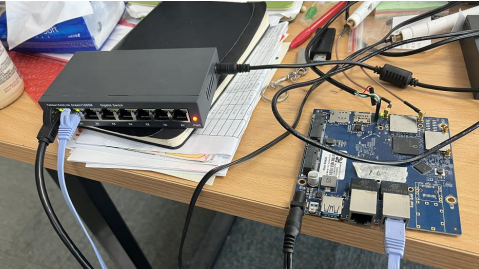Virtual Local Area Networks (VLANs) are a powerful tool for network administrators, enabling them to logically segment a single physical network into multiple virtual networks. VLANs provide many benefits, including improved security, network performance, and simplified network management. In this article, we’ll explore VLANs in more detail and discuss some of their common applications and did a test with wallys routerboard DR4029 at the end of this article.
What is Vlan?
VLAN stands for Virtual Local Area Network. It is a network technology that enables network administrators to logically partition a single physical network into multiple virtual networks, each with its own broadcast domain. This allows for better network performance, security, and management.
VLANs are created by configuring network switches to assign ports to specific VLANs. Devices that are connected to a port that is assigned to a VLAN will only be able to communicate with other devices within the same VLAN, even if they are physically connected to the same switch as devices in other VLANs.
VLANs are commonly used in large enterprise networks to separate traffic between different departments, groups, or security zones. They can also be used to reduce broadcast traffic and improve network performance.
How does Vlan works?
VLANs work by logically segmenting a physical network into multiple virtual networks. This is accomplished by assigning ports on network switches to specific VLANs. Devices connected to ports assigned to a particular VLAN will be able to communicate with other devices in the same VLAN, but not with devices in other VLANs.
When a device on a VLAN sends a packet, the switch will add a VLAN tag to the packet that indicates which VLAN the packet belongs to. This tag is used by other switches and routers in the network to forward the packet only to the ports that are members of the same VLAN.
For example, imagine a company with three departments: Sales, Marketing, and Finance. Each department has its own set of devices that need to communicate with each other, but not with devices in the other departments. By creating three VLANs on the network switch and assigning the appropriate ports to each VLAN, the devices in each department can be logically separated into their own virtual networks.
When a device in the Sales VLAN sends a packet, the switch will add a Sales VLAN tag to the packet. Other switches and routers in the network will use this tag to forward the packet only to the ports that are members of the Sales VLAN. This ensures that the packet is only delivered to other devices in the Sales VLAN and not to devices in the Marketing or Finance VLANs.
VLANs provide a way to logically segment a physical network into multiple virtual networks, allowing for better network performance, security, and management.
Application of Vlan
VLANs are commonly used in large enterprise networks for a variety of purposes, including:
Security: VLANs can be used to segment network traffic to improve security. For example, sensitive data traffic can be placed on a separate VLAN that is only accessible to authorized users.
Traffic isolation: VLANs can be used to separate traffic between different departments or groups within an organization. This can reduce broadcast traffic and improve network performance.
Voice and video traffic: VLANs can be used to prioritize voice and video traffic on the network, ensuring that these applications receive the necessary bandwidth and quality of service.
Guest access: VLANs can be used to provide guest access to the network while isolating guest traffic from the rest of the network.
Simplifying network management: VLANs can simplify network management by allowing network administrators to group devices into logical networks based on their function, location, or department.
Reducing hardware costs: VLANs can reduce the need for additional network hardware, such as routers and switches, by allowing multiple logical networks to be created on a single physical network.
VLANs are a powerful tool for network administrators that can be used to improve security, network performance, and simplify network management in large enterprise networks.
Vlan test (test with wallystech DR4029 board)
The SW we used in this test is with 8 ethernet ports
Set two Vlan ID, which is 1 and 10
Vlan 1: consists of ports 3 to 8, all untagged
Vlan 10:consists of ports 1 to 2, port 1 untagged, port 2 tagged

Actually,ports 3 to 8 will not be used in the pass Vlan over air process
Set one DR4029 PCBA into AP mode,set the other DR4029 PCBA into STA mode
Input the command “iwpriv ath1 vlan_tag 1” into both DR4029 PCBA
SW1 port#1 connect to one PC( IP 192.168.1.40),port#2 connect to one DR4029 PCBA
SW2 port#1 connect to another PC(IP 192.168.1.60),port#2 connect to another DR4029 PCBA
When two DR4029 PCBA connected with each other via wireless radios,then two PCs can ping each other,use Wireshark to capture Vlan data packet
If you're interested in learning more about the DR4029 or any other products or services from Wallys Communications, you can contact them at sales1@wallystech.com, or visit their website at www.wallystech.com

 我要赚赏金
我要赚赏金

